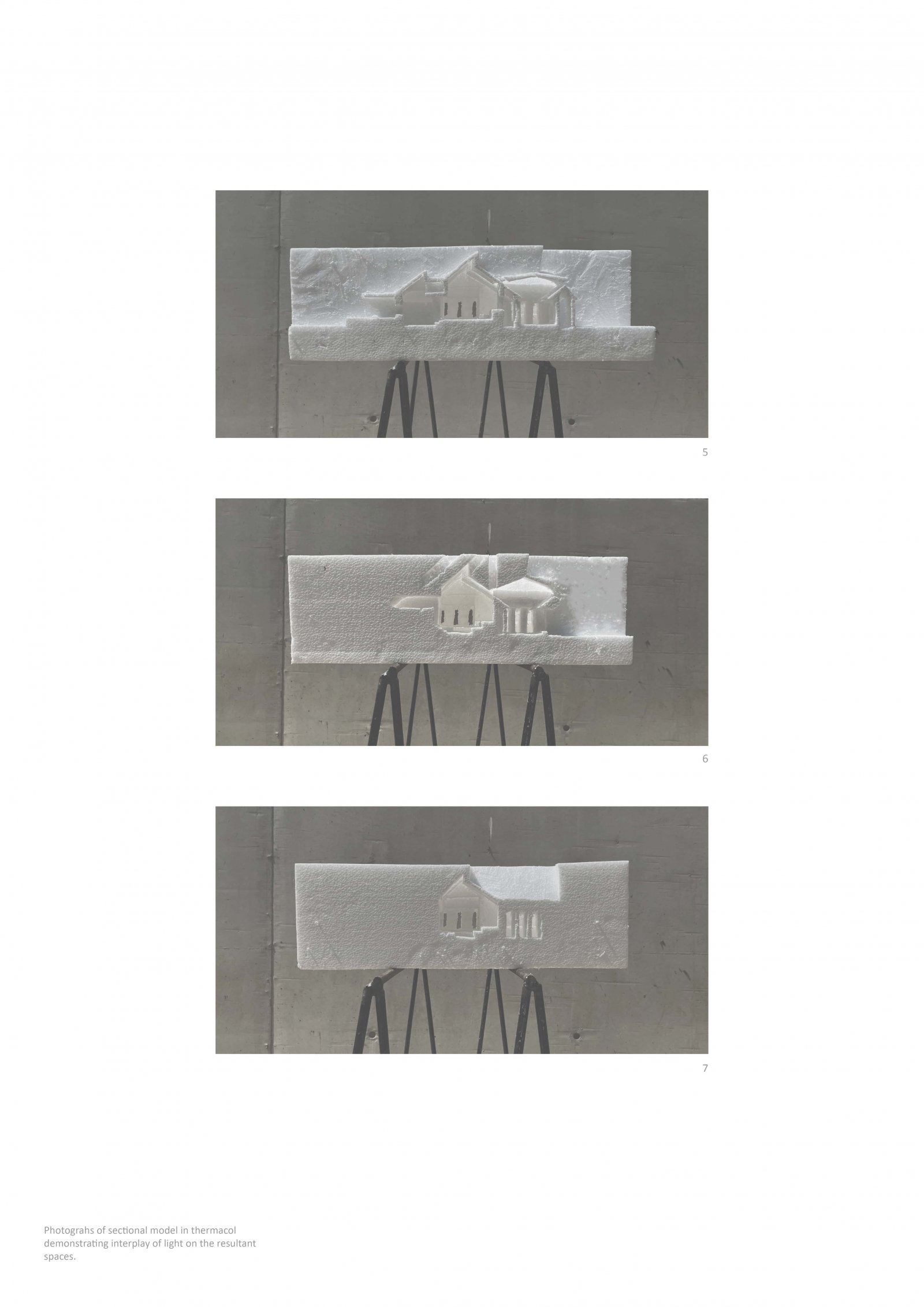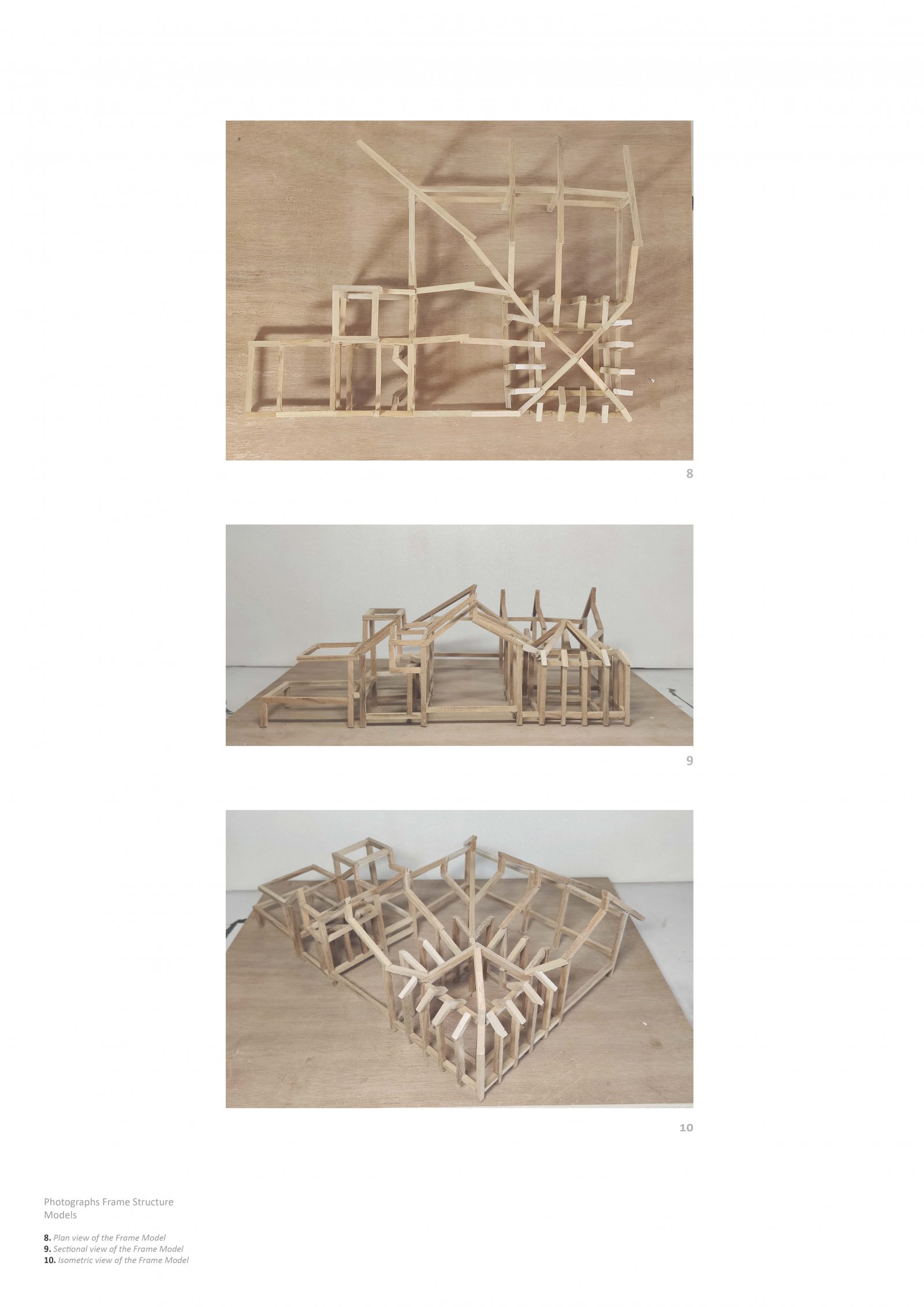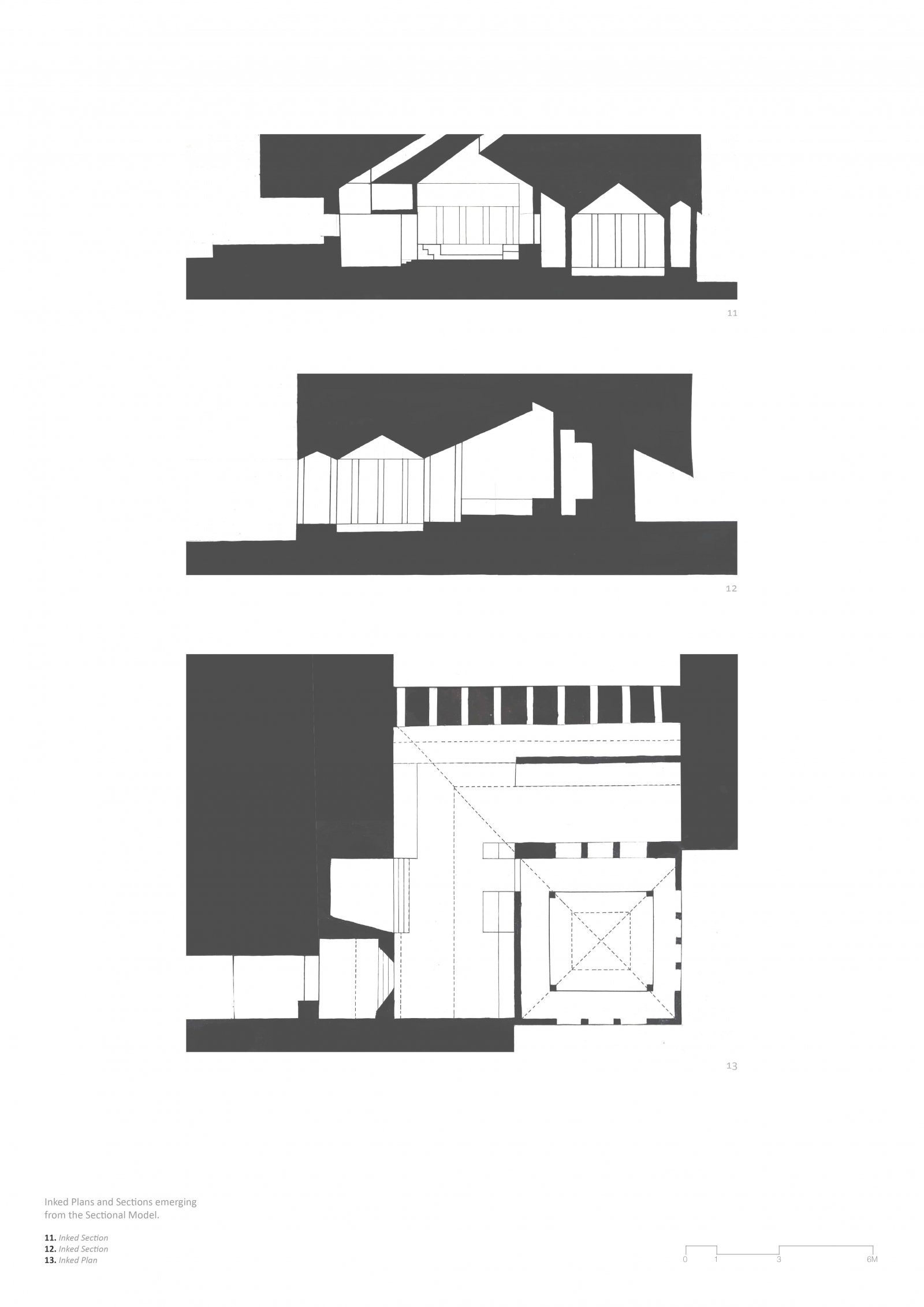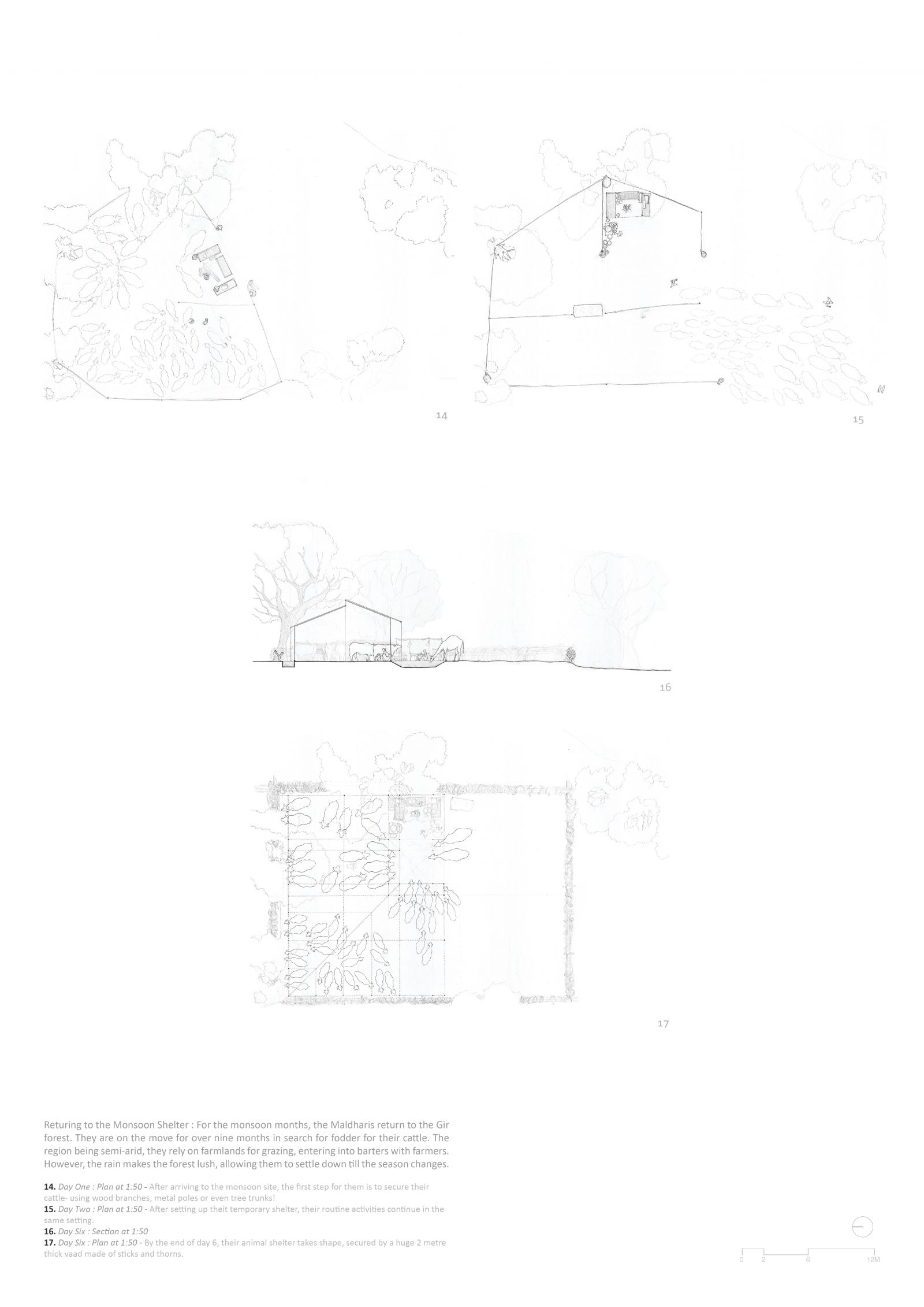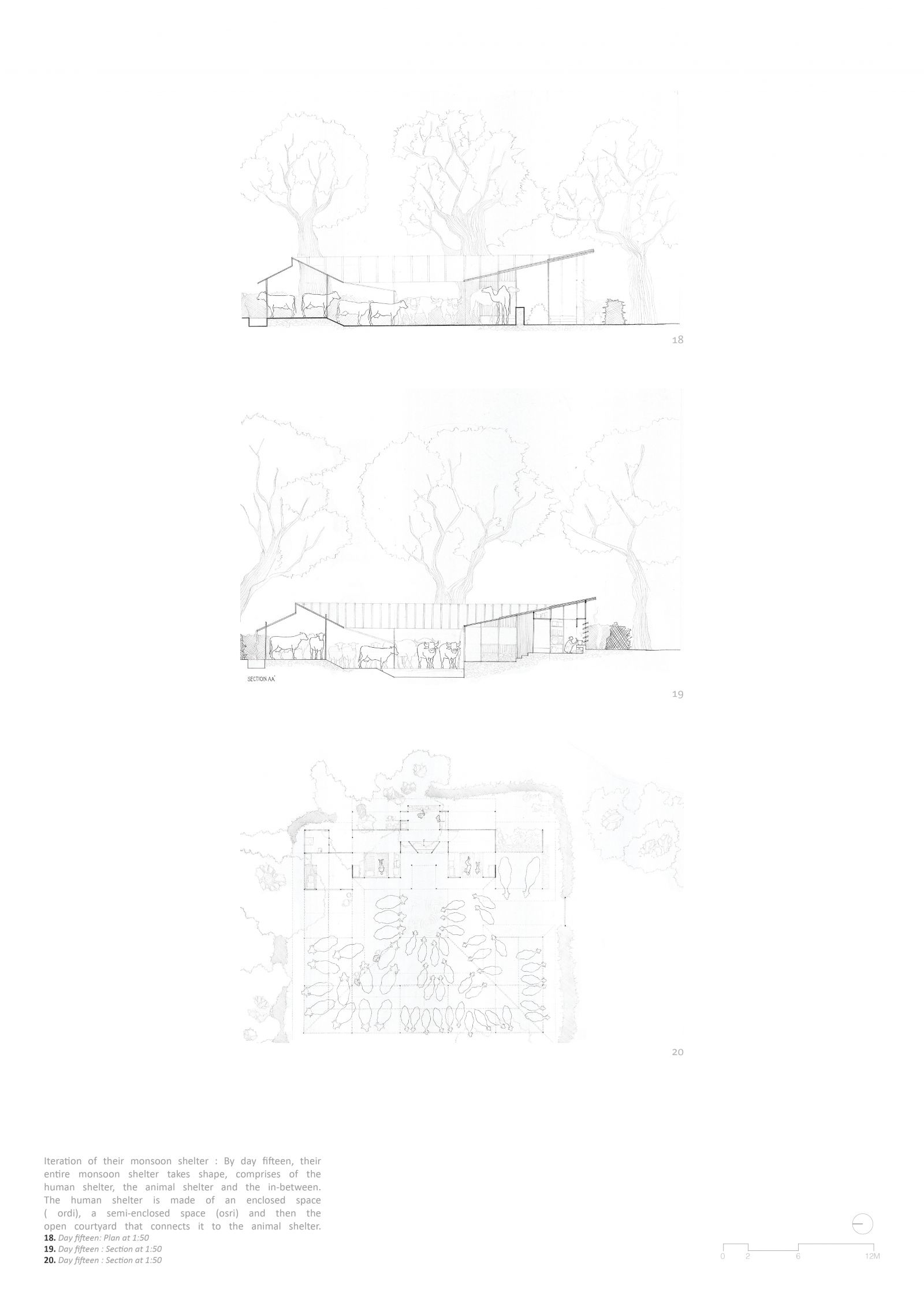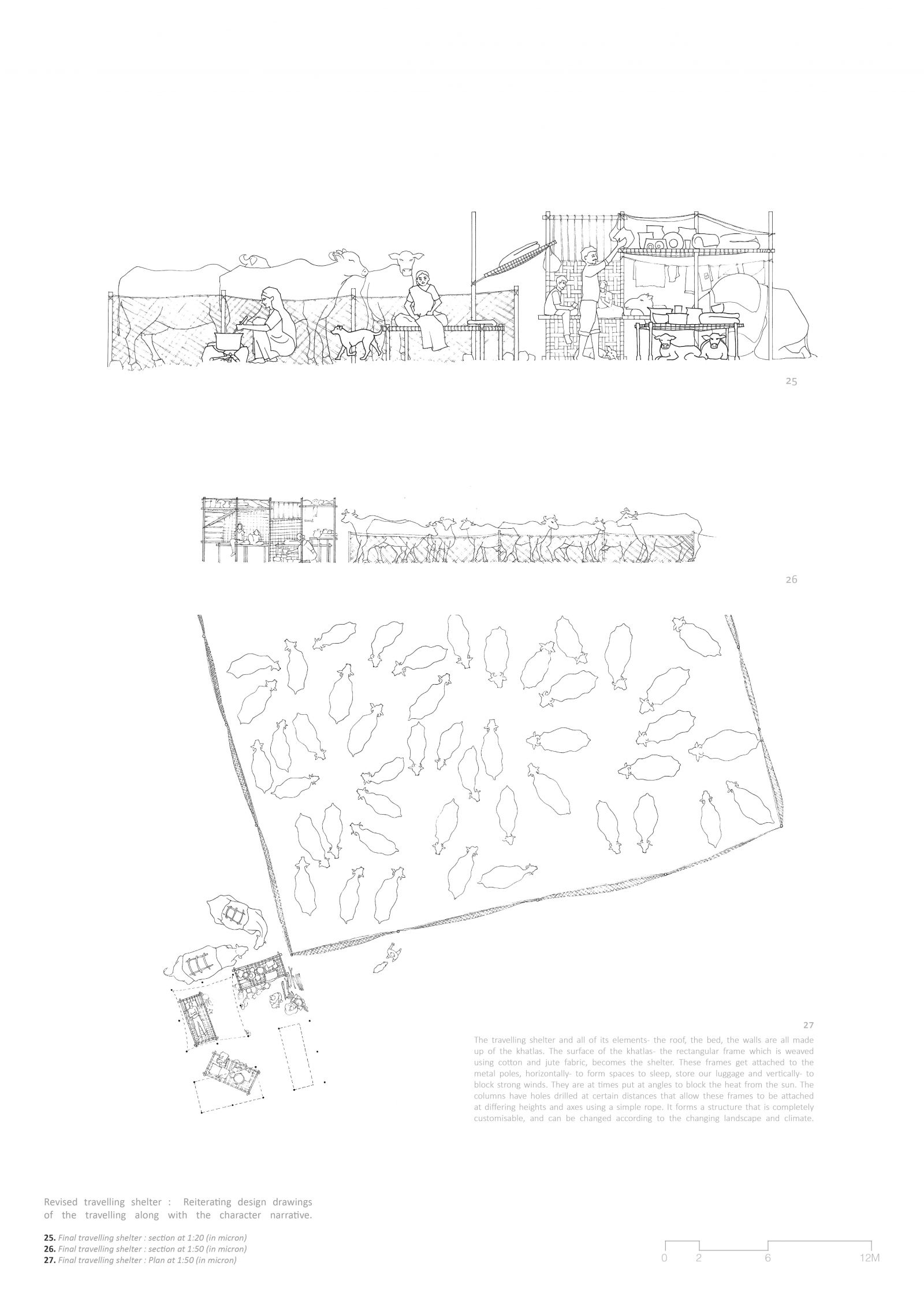Your browser is out-of-date!
For a richer surfing experience on our website, please update your browser. Update my browser now!
For a richer surfing experience on our website, please update your browser. Update my browser now!
This project is a study of the dwellings of the Maldharis, a nomadic pastoralist community residing within the Gir forest of Gujarat. In a world where permanence often defines architecture, this project explores how structures can instead reflect impermanence, flexibility, and deep ecological belonging. The monsoon shelter is rooted in place, built entirely from materials sourced from its immediate surrounding, earth, thatch, stone, and timber— It is not just sited on the land, but of it. Designed to respond to the seasonal rhythms of the forest, it allows for airflow, drainage, and shade, adapting passively to the intense rains and shifting winds. In contrast, the travelling shelter is stripped to its essence, a completely customisable frame tailored to movement. It can be reassembled in varying configurations depending on need, opening to welcome the morning light or closing to protect a newborn calf from the cold. Together, the two shelters reflect a life of impermanence, one built around the rhythms of the monsoon and the other, movement.
View Additional Work

